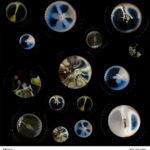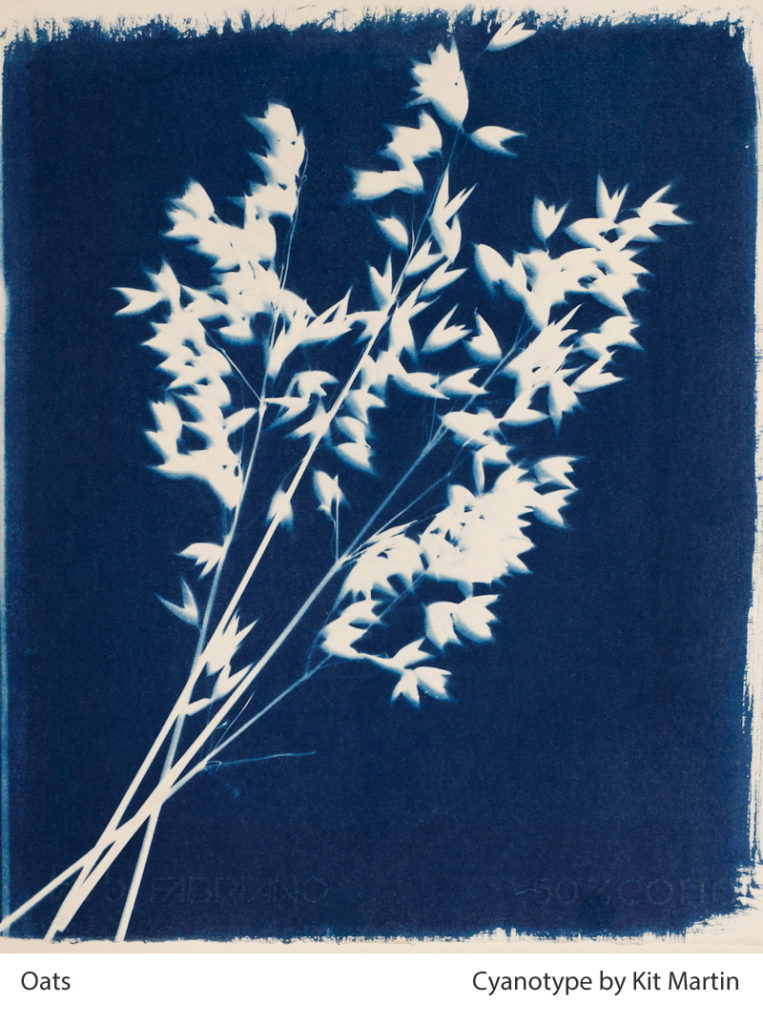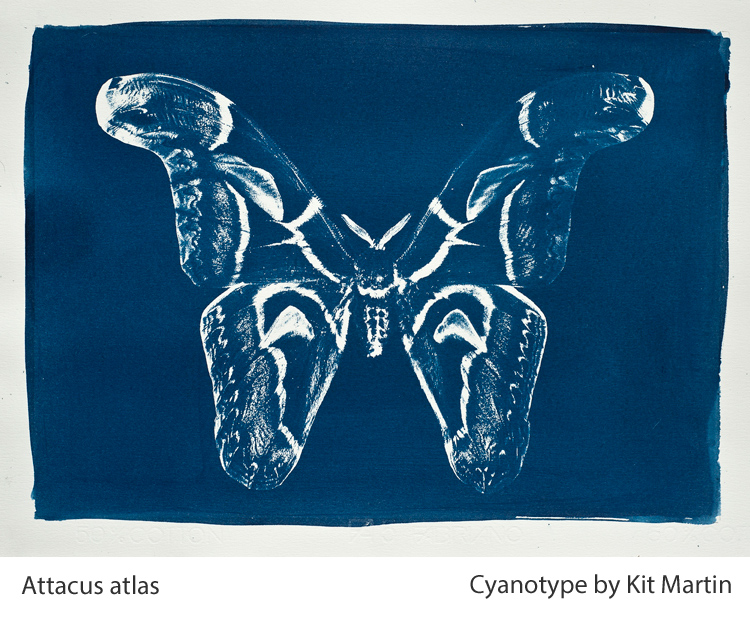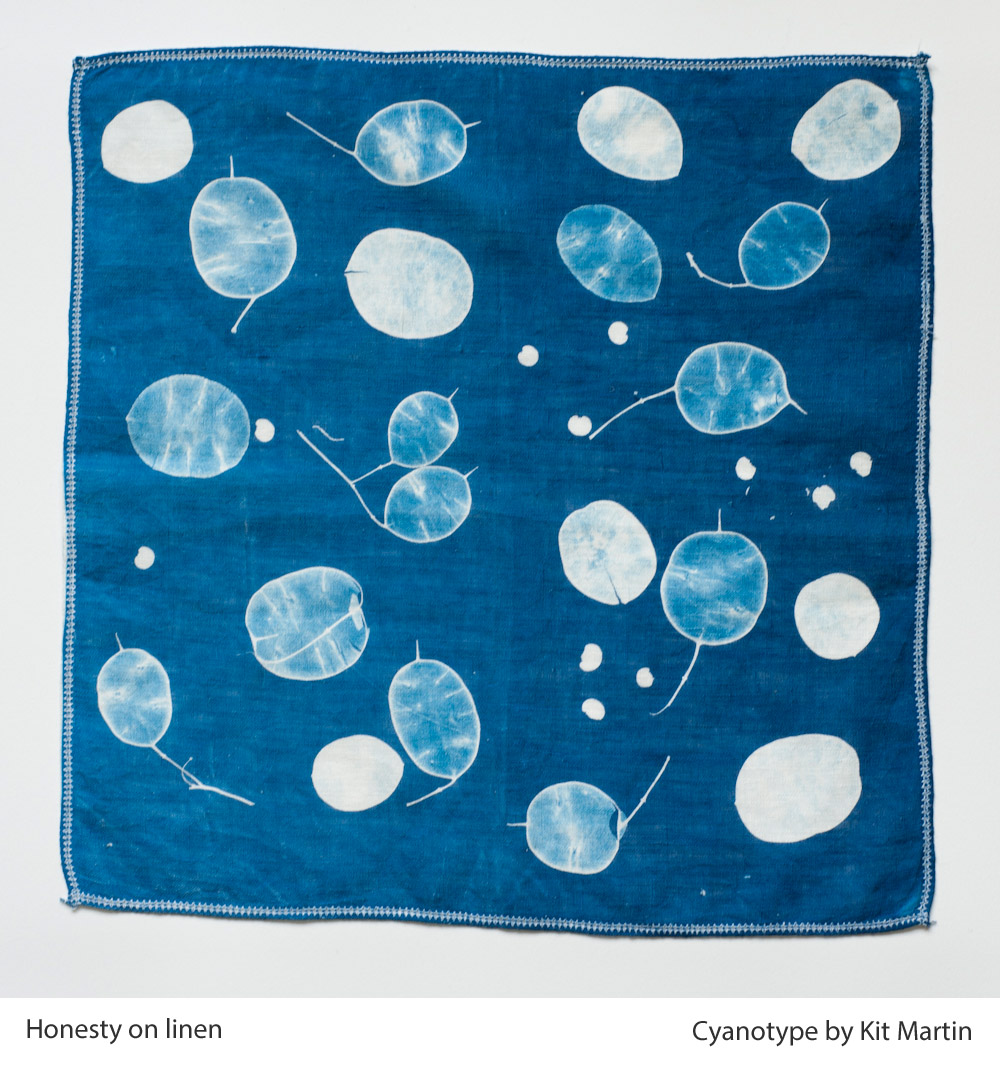
Latest …. Kit is currently holding an exhibition called FRAY at the Verdant Works Dundee. See our News page for a poster and description of the event. Kit has generously allowed us to display one of her works – FRAY I – as this month’s Living Field Image. She explains that the work consists of various photos of flowers, stamens and other structures taken very close-up and through a magnifying glass, then printed onto linen. Click the thumbnail to see the work at 1000 x 1000.
Kit Martin [1] recently visited the Living Field garden to look at possibilities of doing some experimental photography on the plants and insects there this summer. As an example of her craft, she kindly offered some lumen and cyanotype prints to display on this web site. Here is an example of a lumen print. Kit describes the cyanotype process below.
See Sources for a link to her web site and the Bones exhibition at Perth running from 17 March to 24 June 2018.
Cyanotype
Kit writes “The cyanotype process was first introduced by Sir John Herschel in 1842. Sir John was an astronomer trying to find a way of copying his notes, and through this investigation, discovered the potential of 2 soluble iron salts reacting with ultraviolet light [2].
It was the first successful non-silver photographic process. Two chemicals are used: Potassium ferricyanide and Ferric ammonium citrate. The two iron salts do not react with each other until they are exposed to ultraviolet light, when an insoluble blue compound also known as Prussian blue, is formed.
One of the first people to put the cyanotype process to use was Anna Atkins (1799-1871), who was an artist and botanist (and family friend of Herschel). In October 1843 Atkins produced a book called British Algae: Cyanotype impressions [3]. This publication was one of the first uses of light-sensitive materials to illustrate a book as well as printing the text. The book uses 424 cyanotypes. Atkins established photography as an accurate medium for scientific illustration.
Her book therefore precedes William Henry Fox Talbot’s own photographic book Pencil of Nature in 1844 [4]. And all this in a time when women were not generally expected to make serious contributions to human progress!
The cyanotype process has remained virtually unchanged since its invention but a few variations have been developed, one of which is the New Cyanotype II by Mike Ware [5], a UK based photographer / scientist committed to studying the science, history and art of alternative photographic processes. (I haven’t tried his method yet.)”
Ed: More from Kit later in the year.
Sources, references, links
[1] Kit Martin’s web site is at kitmartinphoto.co.uk. She is also exhibiting at the Bones exhibition in Perth, opening on Saturday (17th) and on until 24th June: http://www.culturepk.org.uk/whats-on/bones/
[2] John Herschel’s discovery is described on web pages of the Getty Conservation Institute at Cyanotype (PDF file).
 [3] Anna Atkin’s book British Algae: examples and background at The Public Domain Review and The J Paul Getty Museum‘s web page.
[3] Anna Atkin’s book British Algae: examples and background at The Public Domain Review and The J Paul Getty Museum‘s web page.
[4] The web site The Pencil of Nature shows Henry Fox Talbot’s text and images.
[5] Mike Wear’s page on the New Cyanotype Process gives a history of the cyanotype process and explains new developments.
Contact for this page: Kit Martin – see [1] above.


